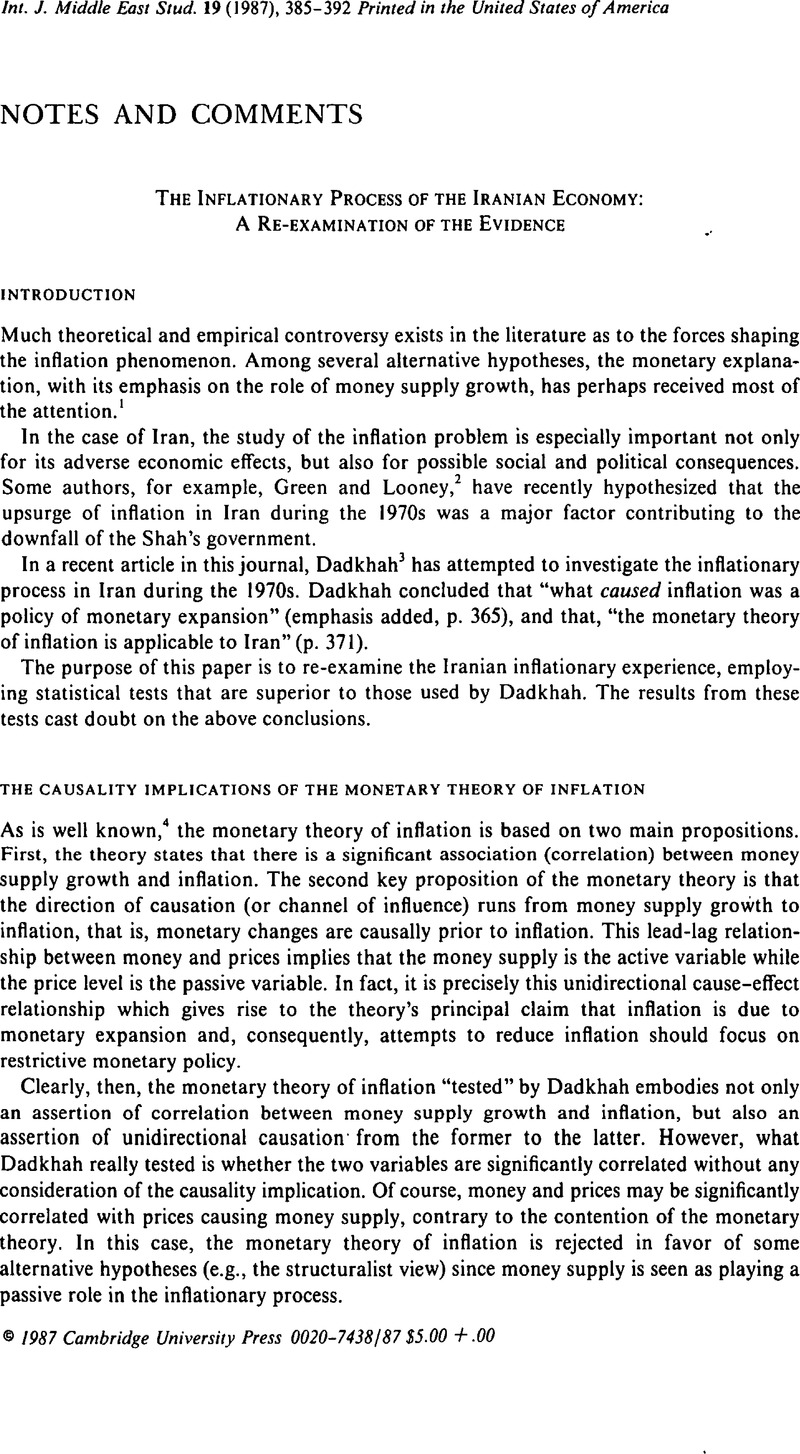No CrossRef data available.
The Inflationary Process of the Iranian Economy: A Re-Examination of the Evidence
Published online by Cambridge University Press: 29 January 2009

1 Among others, see Karnosky, D. S., “The Link Between Money and Prices, 1971–76,” Federal Reserve Bank of St. Louis, Review, 58 (1976), 17–23;CrossRefGoogle ScholarBerman, P. I., Inflation and the Money Supply in she United States (Lexington, Mass., 1978);Google Scholar and Darrat, A. F., “The Monetary Explanation of Inflation: The Experience of Three Major OPEC Economies,” Journal of Economics and Business, 37 (1985), 209–21.CrossRefGoogle Scholar
2 Green, J. D., Revolution in Iran: The Politics of Counter Mobilization (New York, 1982);Google ScholarLooney, R. E., “A Monetarist Interpretation of Inflation in Pre-Revolutionary Iran,“ Journal of Social, Political and Economic Studies, 10 (1985), 87–101.Google Scholar
3 Dadkhah, K. M., “The Inflationary Process of the Iranian Economy, 1970–1980,” International Journal of Middle East Studies, 17 (1985), 365–81.CrossRefGoogle Scholar
4 See, for example, Humphrey, T. H., “The Quantity Theory of Money: Its Historical Evolution and Role in Policy Debates,” in Humphrey, , Essays on Inflation (Richmond, Virginia, 1982), pp. 1–18.Google Scholar
5 For example, Karnosky (1976), Keran, M. W. and Malik, A. A. Al, “Monetary Sources of Inflation in Saudi Arabia,” Federal Reserve Bank of San Francisco, Economic Review (Supplement, 1979),Google Scholar and Looney (1985). Another surprising aspect of Dadkhah's regressions is that money growth was treated as the dependent variable while inflation was used as the independent (explanatory) variable, a practice that is contrary to the monetary view being tested. Moreover, the author assumes away any lagged adjustment between the two variables. Such an assumption is strictly valid in a smoothly operating and frictionless economy, and then only in a truly long-run situation. See Darrat, (1985), p. 212.Google Scholar
6 Granger, C., “Investigating Causal Relations by Econometric Models and Cross Spectral Methods,” Economerrica, 37 (1969), 424–38.CrossRefGoogle Scholar
7 Pierce, D. A. and Haugh, L. D., “Causality in Temporal Systems: Characterizations and a Survey,” Journal of Econometrics, 5 (1977), 265–93;CrossRefGoogle ScholarFeige, E. and Pearce, D., “The Casual Causal Relationships Between Money and Income: Some Caveats for Time Series Analysis,” Review of Economics and Statistics, 61 (1979), 521–33.CrossRefGoogle Scholar